Wanning Bridge, a historical site on the Beijing Central Axis
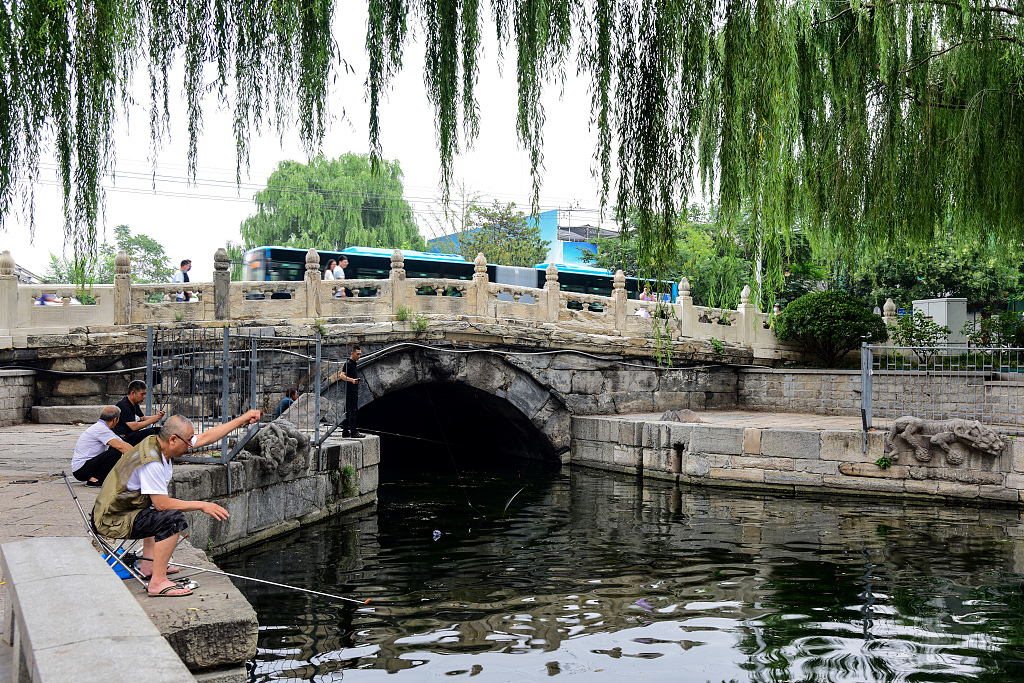
The single-arch Wanning Bridge dates back to the Yuan Dynasty. (Photos: CFP)
The Wanning Bridge is located outside of the Di'anmen Gate in Beijing. It is situated on the city's central axis and has enjoyed a long history.
Various sources show that the bridge was built in 1285, during the reign of Kublai Khan in the Yuan Dynasty (1279–1368). Originally a wooden structure, it was later transformed into a single-arch white marble bridge.
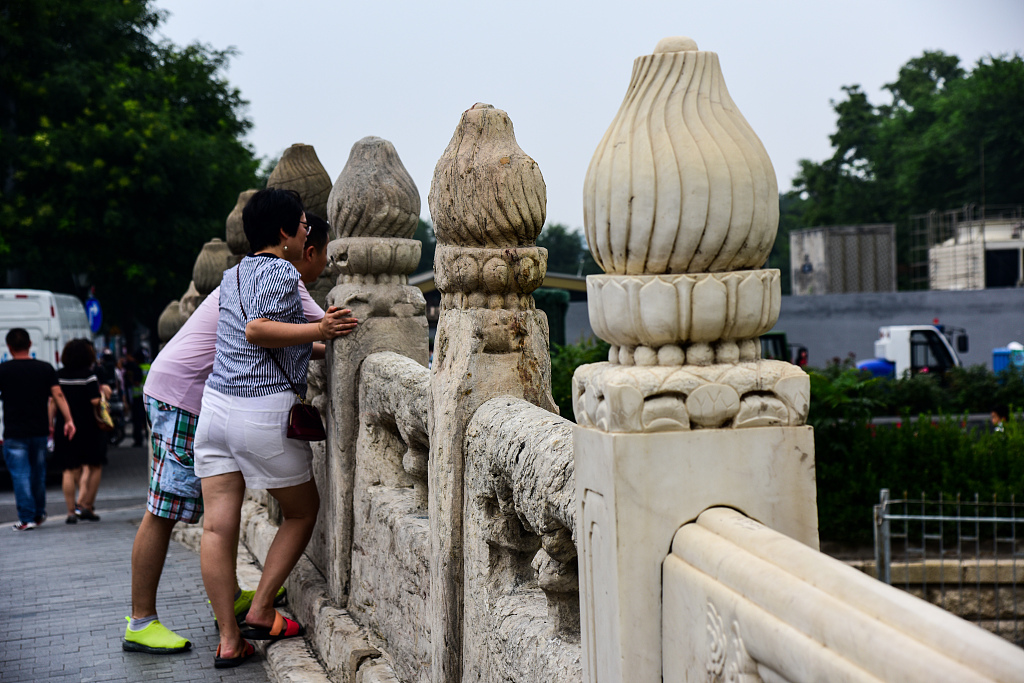
The Wanning Bridge is a popular tourist spot.
The deck of the bridge is paved with stone slabs that arch slightly in the middle. White marble guardrails carved with lotus flowers and vase patterns line both sides of the bridge.
As a part of the city's ancient water network, the stone bridge spans the entrance to the Yuhe River in Shichahai, which lies at the northernmost gate of the Beijing-Hangzhou Grand Canal. As part of China's Grand Canal heritage network, the Wanning Bridge was selected as a UNESCO World Cultural Heritage Site in 2014.
Beneath the bridge, sluice gates could be lowered to stop the flow of water or raised to allow grain and cargo boats to pass through and proceed directly to the capital.
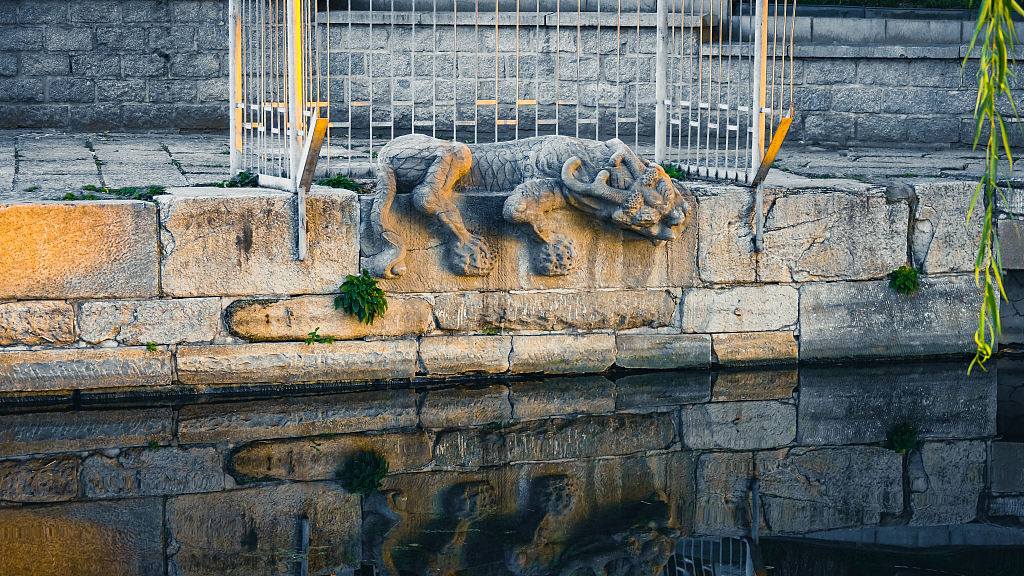
Carvings of 'water-quelling beasts' adorn the bridge.
Carvings of "water-quelling beasts" can be found at the entrance to the bridge, which have always appealed to tourists. Named gong fu, the beasts look like dragons, but have flatter foreheads, horns on their heads and scales across all their limbs. It is said that they date back to the Yuan Dynasty and were used as drains to avoid flooding and ensure safety.
Today, the stone carvings and lotus flower decorations on the bridge can still be seen thanks to the care of Beijingers and the city's cultural protection measures.
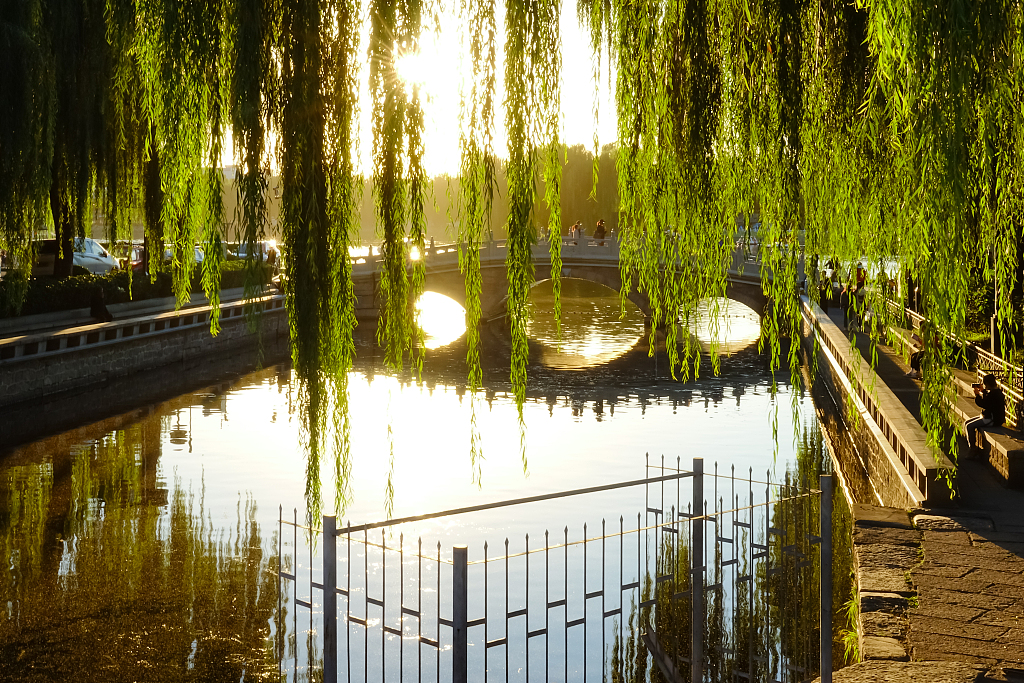
The area around the Wanning Bridge is a popular tourist spot.
The bridge played an important role in defining the historical upper limits of the Beijing Central Axis and continued to do so through the Yuan era and subsequent dynasties.
The Beijing Central Axis measures around 7.8km long and begins at the Bell and Drum Tower, continuing south over the Wanning Bridge and ending up at Yongdingmen Tower, encompassing many significant landmarks of the ancient capital including Tian'anmen Square and the Palace Museum.
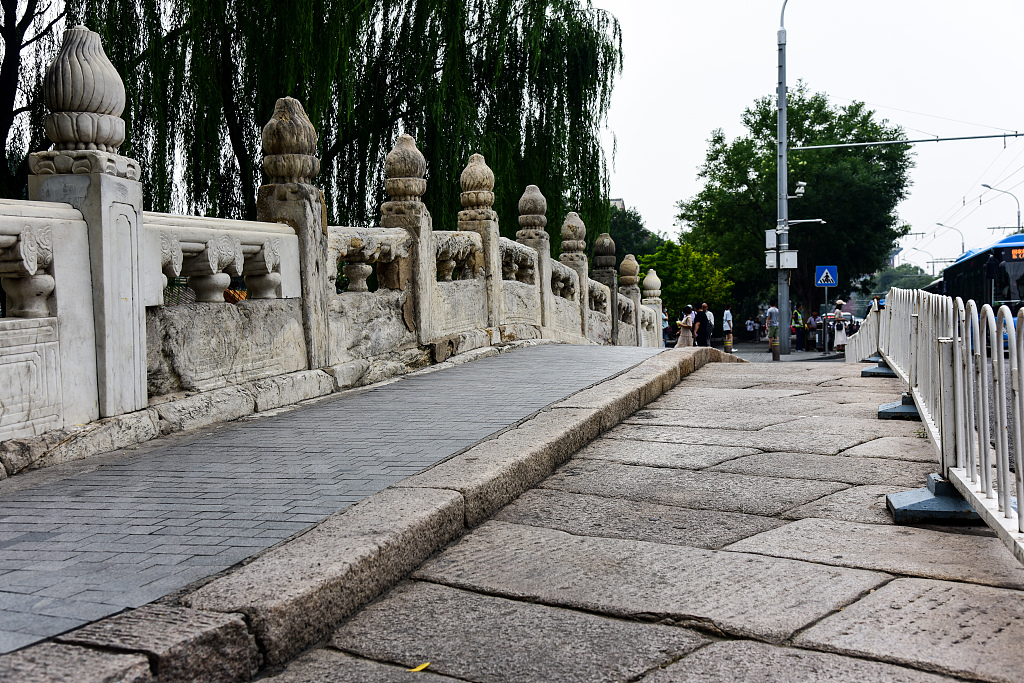
Heavy stone slabs cover the Wanning Bridge.
In January 2023, the Beijing Municipal Cultural Heritage Bureau published a plan spanning from 2022 to 2035, laying out a protection plan for the Central Axis while noting its significance to Chinese civilization.
Under the plan, the ancient bridge is also a focal point for conservation in future protection and restoration efforts. Measures such as traffic flow limits and vehicle weight restrictions are being implemented to reduce structural pressures on the Wanning Bridge.
Related articles
-
 Sands of time protect an ancient treasure
Sands of time protect an ancient treasureMore
-
 Cultural Relic: Pottery Figurine of Horsemen
Cultural Relic: Pottery Figurine of HorsemenMore
-
 Unearthed flush toilet dates back 2,400 years
Unearthed flush toilet dates back 2,400 yearsMore
-
 Cultural Relics: Ceramic Figurine of a Weeping Woman
Cultural Relics: Ceramic Figurine of a Weeping WomanMore
-
 Cultural Relic: Pig? Dragon? Jade-pig Dragon!
Cultural Relic: Pig? Dragon? Jade-pig Dragon!More
-
 Ceramic -- a centuries-long bond between China and France
Ceramic -- a centuries-long bond between China and FranceMore
